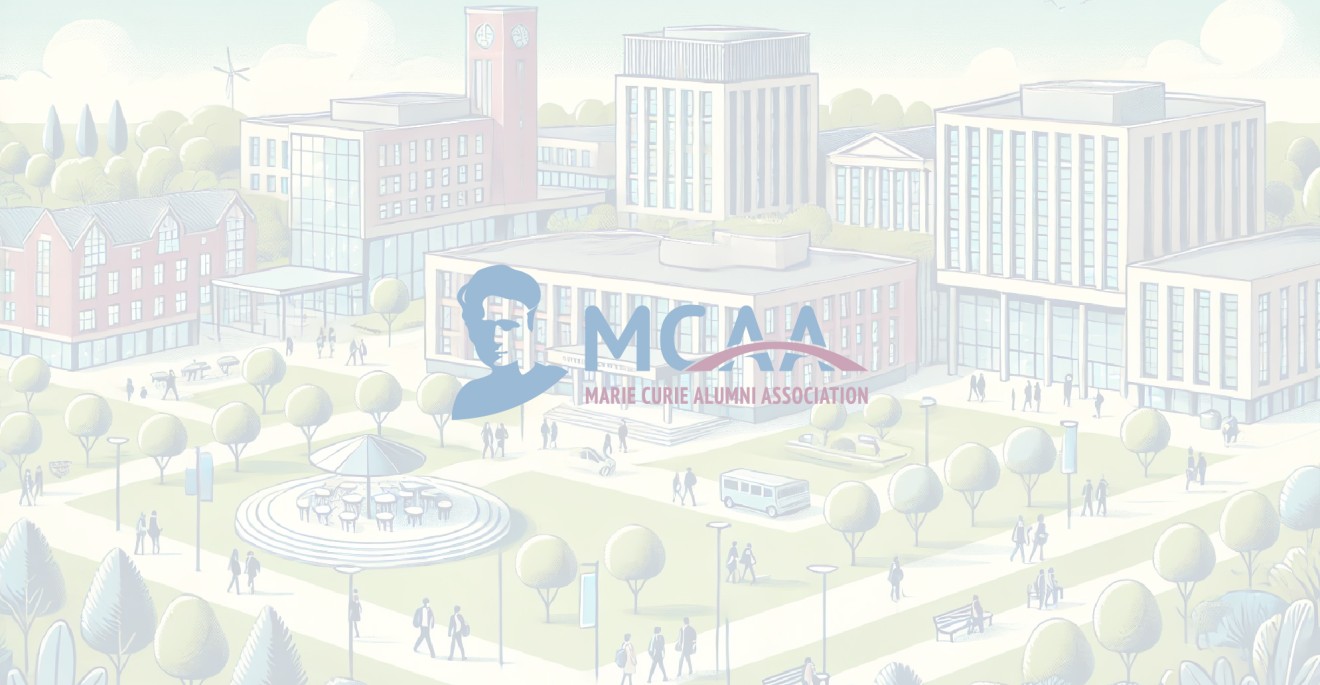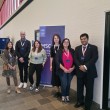The Marie Sklodowska Curie Actions come of age ...

On the 29th November 2016, the Commission celebrated the 20 years of Marie Sklodowska Curie Actions at a well attended birthday party thoughtfully hosted in downtown Brussels, near the Research Executive Agency so that the many backroom staff who attend to the legendary (apparently!) administration could also glimpse a little of what their impact is.
Over the last 20 years, the Marie Skłodowska-Curie Actions have supported nearly 100,000 excellent researchers, boosting their careers and broadening their horizons globally in a strengthened European Research Area. The budget for the programme has grown beyond all recognition, and is now by far the largest programme in the R&D framework of initiatives that do not prescribe any scientific priorities, better allowing the needs of research and researchers to drive the agenda forward and respond to immediate developments. The proportionate dynamic allocation of the budget based on the relative numbers of proposal received is another unique feature amongst the sometimes overplanned mega initiatives that are inevitable in a 70 Billion euro plus programme covering over 40 countries.
But Andrea Ferrari, who heads the Cambridge Graphene centre and is a key player in the FET (Future and Emerging technologies) flagship[1] Graphene, reminded us of the sometimes frought journey through the European landscape (or was it minefield) of funding and mobility opportunities and challenges which can lead to huge rewards. Graphene is a two-dimensional carbon-based material, has a great potential to underpin new disruptive technologies, substituting materials used in existing applications but also leading to radically new markets and applications. After 10 years of tinkering at the edges the Commission took the plunge in a critical mass approach. The Flagship aims to take Graphene and related layered materials from the realm of fundamental science to industrial and societal applications in the space of ten years. He elaborated the years of funding applications that succeeded finally in focusing a mega effort and also hinted at some of the spin offs that we are already using in everyday life. It is not just the space race that benefits from such material developments with the space elevator of science fiction fame since first proposed in 1895 becoming feasible[2]; but also ladies razors having cutting edge technology. Yes, Commission programmes are gender balanced... No programme has achieved such a level of gender equality as the Marie Curie actions – not by discriminating on their behalf but by levelling the playing field, making the terms of the fellowship family friendly and treating researchers like human beings, with required contractual assurances from host organisations. For that, the fellowships are well funded, everyone agreed.
Elizabeth Evenden-Kenyon, Brunel University (UK), reminded us of the need to implicate society in these often complex issues of scientific development. She reminded us that we can clone Dinosaurs, but we pay little attention to the research needs of social sciences and the humanities. It is the Humanities that ultimately contribute the motivation to the decision making process that supports research. The Humanities tells why we would want to clone dinosaurs, and the pro’s and con’s for society and its value set at that juncture. We were reminded that Marie Curie Actions are for ALL research, but year after year far too few proposals are received for this field. If in 2017 social sciences and humanities were to double the proportion of proposals, the Commission matches this ambition and increases the funding proportionally. She called on European Social Scientists to start writing proposal NOW!
The "Young Researchers' Declaration" was presented by its author, Shane Bergin (School of Physics Trinity College Dublin). It was recently launched in Bratislava at an EU Presidency event[3]. This declaration – written by young researchers – calls on Member States and the European Commission (EC) to recognise the special role that young researchers play and aspires to better enable them: great ideas and ability are divorced of age (metaphorically speaking one assumes), gender, race or nationality. Who could not agree with these aims and aspirations:
- to enable great people to realise their ideas to understand and improve the world;
- sustainable and transparent career trajectories;
- a diverse, collaborative, inter-disciplinary, open, and ethical research environment;
- a healthy work-life balance.
Again the Marie Sklodowska Curie actions step up to the mark. It alone has come close to the average gender participation target of 40% of each gender, and then – again uniquely in EU programmes – created an opportunity for a career restart window to re-enter research for those on a family or health break for one reason or another – gender independent. The Commissioner responsible for the Actions also called for more female leadership in Cosortia. Tibor Navracsics, Commissioner of Education, Culture, Youth and Sport said “although participation levels are good, women are still less likely to lead in research consortia. I would like to encourage more gender balance at this level. ... we need to ensure that when devising projects, our researchers take full account of the gender-related aspects of their work. Let me be clear ... gender balanced research teams and comprehensive topics ensure excellence. “
Jerzy Buzek MEP and immediate past President of the EP, and Chair of all important decision making ITRE Committee, reminded us of the issues faced by Marie Curie herself. Her forced mobility to France to find a career, her multidisciplinary research at her husbands Institute, her humanitarian efforts in WWI in the fields of Flanders with pioneering X-ray vans to help injured soldiers; to the final recognition in the 1930’s by her home state of the tremendous contribution to Science she had made. She remains the only female double Nobel Prize winner (and in two different areas), amongst just four who have won two Nobel prizes in 115 years of the award.
The European Commission's long term commitment to supporting our brightest and best researcher is paying off. For example, five Nobel Prizes and an Oscar have been awarded to Marie Skłodowska-Curie fellows. And our CERN co-operating alumni were at the heart of recent scientific breakthroughs on gravitational waves and the Higgs Boson. The conference also heard from a former Cambridge based biology researchers and Marie Curie fellow whose career took an unplanned turn recently. Tiago Brandão Rodrigues sent his best wishes to the attendees by Skype, as it was Budget day in Portugal and a physical presence was essential. He was working on cancer research in Cambridge in the UK when he had the opportunity to take a career change. He became the Portugese Minister for Education! When he wants to resume his career in research, the Marie Curie career Restart window will be there to offer him the chance to get back to the lab.
The Commissioner reminded the attendees that discussions on EU funding after 2020 will begin soon. It is encouraging that in their work on the Bratislava Declaration of Young Researchers, both the research community and the Council of Ministers are advocating more investment in researchers at the start of their careers. “We must recognise that the profession of research is changing. This is not least due to the opportunities for analysing and sharing information offered by developments in the digital world. More than ever, researchers need to collaborate with other professionals. Working across disciplines, breaking down barriers between different branches of knowledge, has become a striking feature of collaborations.” He highlighted one particular challenge, which applies to all of Horizon 2020. It is the continued science divide, with wide discrepancies between European countries in their ability to attract funding. The Commissioner wants to “make the Marie Skłodowska-Curie Actions part of the solution. So I have started discussions with Member States about finding the best ways to widen participation and thereby spread excellence right across Europe. These measures will be compatible with maintaining the principle of awarding funding based on research quality. At the same time, I am asking Member States to make improvements. I want more of the excellent proposals to be implemented. You can be sure that I will always seek greater financial resources for the programme. But we all know that demand greatly outstrips what we can offer in terms of financing.”
So as the Birthday cake was being prepared by the organisers in the wings of the auditorium, the Commissioner made an announcement that is surely the icing on the cake: “today I am launching the Marie Skłodowska-Curie Actions 'Seal of Excellence', which will first be awarded early next year. All proposals for postdoctoral fellowships that obtain a score above 85% will receive this Seal of Excellence. Thanks to this change, applicants who have just missed out on a grant can use our Seal of Excellence to encourage other funders, at national or regional level, to finance their project instead. We believe that introducing the Seal of Excellence further strengthens the Marie Skłodowska-Curie Actions as a benchmark for how nations and regions can keep, attract and develop the best research talent. The Seal will encourage and assist the use of the European Structural and Investment Funds to provide attractive, high-quality career development opportunities for researchers. By enabling different EU funding programmes to be used in synergy, we make them more accessible and boost their impact. We expect the Seal of Excellence to be awarded to researchers intending to move to a wide range of Member States and Horizon 2020 Associated Countries.”
With that finale and a cake large enough to share between anyone who was not calorie conscious, the candles were snuffed out on the stage but the flames were lit for a bright and well funded future for the Marie Sklodowska Curie Actions. But the audience were reminded that the flames were for them to fan – for them to enthuse their outreach audience, to reach their parts of society to explain the benefits of research and developments, to go to their innovation sectors and work with them, and lastly to make sure their local decision makers are aware of the continued need for funding of a strategic size, scope and scale to have global impact. Only the wider Marie Sklodowska Curie Actions supported at a European level can reach individuals to enable them to fulfil their ambition in research relevant to the needs of all.
Mike Rogers, Hon Member, MCAA
[1] Flagships are visionary, science-driven, large-scale research initiatives addressing grand Scientific and Technological (S&T) challenges. They are long-term initiatives bringing together excellent research teams across various disciplines, sharing a unifying goal and an ambitious research roadmap on how to achieve it.


